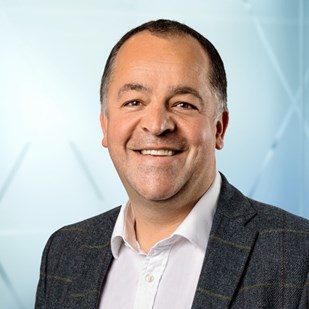2022 is set to be a landmark year of change in the London market, with the evolution of cloud computing, distributed computing via APIs, and data augmentation all starting to culminate in opportunities for the market to be more efficient as it starts to move from analogue to digital.
 This is according to Tim Rayner, CEO and President of Specialty Business Solutions at Verisk, who spoke to Reinsurance News about the future of the market and the different kinds of technology and data that Verisk offers to its clients.
This is according to Tim Rayner, CEO and President of Specialty Business Solutions at Verisk, who spoke to Reinsurance News about the future of the market and the different kinds of technology and data that Verisk offers to its clients.
He said: “The landmark year is really the analogue to digital journey, taking advantage of some of the evolutionary benefits. I think, for the first time, technology has outpaced the insurance markets’ appetite.”
As a company, Verisk offers a wide range of unique data assets and insights, as well as deep domain expertise. The company is consistently bringing in new ways to help their clients.
Rayner explains that one of the key themes that Verisk is looking at is data augmentation to compliment Specialty Business Solutions’ end-to-end ecosystem of capabilities.
“Data augmentation can be used in two different ways. It can be used pre-bind to accelerate the provision of quotes: the data can either validate information that has been provided from the distribution partner – whether it be the insured, the coverholder/broker, or the retail agent – or it can be used to pre-fill and reduce the number of questions that need to be asked. The same data can also be used post-bind as part of the management and analysis of in-force exposures through modelling in our Extreme Event Solutions products.”
“One of the objectives we’ve got is to get down to a single question on an insured asset and address. Then, from that single attribute, we can use our datasets to pre-fill every other risk metric. That risk information then feeds the rating algorithm to provide a price that we would argue is technically more accurate because it’s based upon professionally assured third-party data.”
Third-party, professionally assured datasets are something that Rayner believes can deliver a much faster quote, bind, and issue experience, as well as more accurate technical prices.
Rayner highlighted that technology can also help insurers pursue their environmental, social and governance (ESG) goals.
“We have one of the market-leading providers on ESG indices outside of insurance and one of the things that we’re focused on as a OneVerisk initiative is bringing such assets – in this case Maplecroft – into the London and global specialty markets. Utilising ESG data sets in pre-bind and post-bind scenarios is a key focus.”
Rayner also spoke about the Sequel Hub and Sequel6 – initiatives that were launched last year and designed to bring market collaboration with a group of leading syndicates to simplify the distribution of standalone products and delegated authority business. Rayner noted that the Hub allows a collective range of elective services which can be provisioned to support a more efficient distribution chain agnostic of how the placement is transacted or capital managed.


